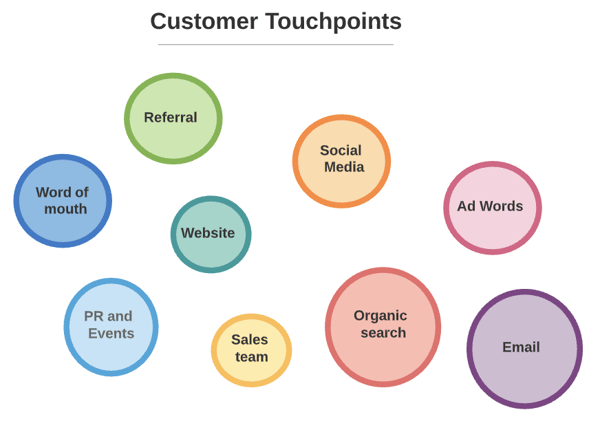Steve Jobs, said this: “You’ve got to start with the customer experience and work back toward the technology, not the other way around.”
According to research by Salesforce, 74% of people are likely to switch brands if they find the purchasing process too difficult.
A customer journey map is a technique used by many businesses to help visualise each step your customer takes with your business.
This visualisation helps your business gain a deep understanding of the journey that lead up to them taking a specific action with your business.
This is by no means a linear path to purchase. It’s dynamic and in many ways quite frantic.
This process highlights any friction that may exist within the customer journey and allows you the opportunity to solve it in a way that positively adds to the overall customer experience.
In this blog post, we’re going to look at the 5 steps you can take to creating a customer journey map.
Let’s get started:
How to create a customer journey map:
1. Goals.
You cannot succeed at anything without goals.
Any marketing, sales or customer service activities need to be centred around achieving those goals.
Yes, your customer’s goals will be different from your business goals, and that’s okay. The point of this process is to also identify what your customer’s goals are, which will effectively lead you to achieve those business goals.
Download: The Content Marketing Strategy Template to help you generate traffic and convert leads.
2. Persona profiling.
As inbound marketers creating buyer persona’s is always our starting point. If we don’t know who your ideal customer is, how will we create an effective path to purchase for them?
We can’t. It’s that simple.
With your goals in mind, we need to create buyer personas.
These are semi-fictional representations of your ideal customer. This is based on data and market research you’ve been able to conduct through forums, social media, surveys and interviews.
HubSpot has a great free tool, Make My Persona, to help you build out your buyer persona.
Your buyer persona must contain basic demographic information, but to fully understand your persona you need to intimately understand what their goals, challenges and pain points are.

Image source: HubSpot
3. List all touchpoints.
Survey Monkey defines it like this: “A touchpoint is any time a potential customer or customer comes in contact with your brand–before, during, or after they purchase something from you.”
It’s time to jot down all your customer touchpoints.
It could look something like this:

Once you’ve done this it’s time to map these touchpoints to where they are within their buyer’s journey.
Which looks like this for us:

This helps us understand where a prospect in their buying process. Your journey may include other elements such as pre-purchase and/or post-purchase.
There is no right or wrong way of depicting the buyer’s journey as long as you have one to map all your customer’s touchpoints too.
It should end up looking something like this:

Image source: Creative Market
4. Resource audit.
A customer journey map will highlight everything that goes into creating the customer experience people enjoy with your brand.
This is a great opportunity to assess those resources, whether that’s looking into adding more prominent CTA’s, optimising product descriptions or overhauling your content strategy to help improve the overall customer experience.
5. Walk the customer journey.
You need to walk through the journey you’re mapping. It may highlight a touchpoint that’s missing the mark or a touchpoint that should be added or even taken away if you feel it hinders the journey.
But, how will you know any of that without walking through the journey yourself?
This process will ensure that you are creating value at every touchpoint, increasing your chances of converting them from lead to customer.
6. Make changes.
This process should have highlighted key areas of improvement.
It’s now time to action those changes. Go forth and conquer 💪.
It’s important to try and run this process annually. The rapid changes in consumer behaviour mean that you always need to be one step ahead in helping your customers solve their problems.
Key Takeaways
There is no doubt that a visual representation of the touchpoints each persona has with your business provides immense strategic value for your business.
It can be a time-intensive process, but time and time again it proves valuable.
A customer journey map should go on to influence your marketing, sales and customer services strategies.
If you're looking to acquire new customers and kickstart a sustainable growth strategy for your business, then this eBook is just for you. Simply click the button below to get your copy 👇



